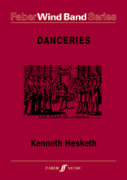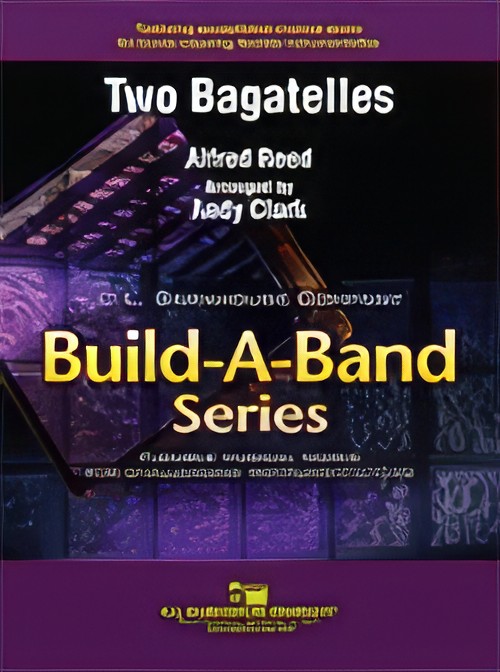Results
-
£141.00
Red Lines (CB) - Stijn Aertgeerts
Red Lines was commissioned by the Swiss Army Brass Band and their conductor Philipp Werlen. The title is a reference to their very distinctive black uniforms with Red vertical lines. Switzerland is a country with a tremendously rich brass band culture and have some of the best bands in the world. The individual level of musicians is also of incredibly high quality. The work begins very bombastically with continuous 8th notes. This immediately sets the drive for the entire first movement where the low brass and woodwinds can also show off huge sounds several times. It culminates in a grand tutti before the music calms down in the second movement where the euphonium can show its solistic qualities and the band can show a big difference in dynamics and sound. The final movement is driven by the drums and timpani that provide a solid boost to keep moving the thematic material forward in the band and through the percussion solo a big build-up to a glorious finale.
Estimated dispatch 7-14 working days
-
 £183.20
£183.20Finale from The New World Symphony - Antonin Dvorak
This arrangement was written for Norwegian School Band Madlamark Skolekorps to their participation at the Norwegian Championships 2023.The arrangement will work excellent also for a wind ensemble (one player to each part), but the clarinet parts should always be doubled.Euphonium II is optional, but it's recommended to use also this when there are two players or more on this instrument. Concerning percussion, timpani is the most important part, but it's recommended to also cover cymbals and mallet percussion.The articulation and dynamics are kept as close as possible to the original version by Dvorak. However, some changes has been made to make it more suitable for a wind instrumentation. The timpani part is identical to the original version except for some places when the trumpet signals are doubled in the timpani part.Staccato notation should not be played short here, but rather separated. At faster passages, the music should be played endurant or legato if possible.This arrangement is a good opportunity to perform music of highest quality where musicality, phrasing, balance and intonation are very important, and, where each musician and part are deeply involved in the music making.
Estimated dispatch 7-14 working days
-
 £105.00
£105.00Danceries (Set I) (Concert Band - Score and Parts) - Hesketh, Kenneth
The term 'Danceries' can be found in a copy of Playford's Dancing Master, an extensive collection of folk and popular tunes of the seventeenth century (and no doubt earlier). This publication was used by master fiddle players to teach the various dance steps of the day to a nobleman's house or a king's court. Whilst this present set of 'Danceries' cannot be said to be an aid to terpsichorean agility, it will at least set feet tapping! The melodies themselves are a mixture of new and old--well, nearly. Where the old occurs it has been adapted in mood and composition and is often interspersed with completely new material. The harmonies and rhythms bring a breath of the new into these themes and add to the drama of the set.Movement 1: Lull me beyond thee. Gentle and lilting, almost a barcarole, this movement is very much a reverie. The original tune had the name 'Poor Robin's Maggot' - a rather disconcerting title; maggot, however, in seventeenth-century parlance meant whim or fancy. This theme can also be found in The Beggar's Opera by John Gay (first performed in 1728) under the title 'Would you have a young lady' (Air 21).Movement 2: Catching of Quails. A colourful, buoyant scherzo on an original melody. The thematic material is shuttled around the band to contrast with full-bodied tuttis. The last few bars fade away to almost nothing before a final surprise!Movement 3: My Lady's Rest. A tender pavane, also on an original theme, with Moorish leanings. Solos for principal winds and brass contrast with warmer tutti passages. The movement culminates with a final presentation of the theme before evaporating in held flute and trumpet chords.Movement 4: Quodling's delight. The final movement to the set combining one of the melodies from Playford's Dancing Master ('Goddesses') with an original contrasting melody. A dramatic and exuberant ending to the set of 'Danceries'.Duration: 12.00
Estimated dispatch 7-14 working days
-
£134.99
Recalls - Ben Haemhouts
Recalls obviously refers to memories. This piece of music is in fact a series of flashbacks, however, it does not highlight the actual memories of specific thoughts, people or events.The composition evolves around the late Frans Steurs, who for manyyears was the inspirational artist behind the brass band that is currently commissioning this work. The main theme of the work is based on the name STEURS". E = mi, U = do, R = re and S = "si" which is Dutch for the note "ti". This idea forms themusical theme for the entire composition and different variations are used throughout. The structure of the work is based on the concept of a story which father Steurs is telling his two daughters, who play the flute and the clarinet. Each part ofthe work has a story-like character:1. Introduction: following a short ominous intro, the main theme is presented for the first time.2. The Story: father Steurs has both his daughters on his knee and he tells them stories from the old days. Trumpetsand trombones play variations of the theme. The story gets very exciting (accelerande, poco a poco agitato) until the tale takes a dramatic turn when the father tells an exciting story at the time of the Second World War. He tells of being hunteddown by the occupying army and these adventurous episodes are related to us musically in part3. Danger, with its skilful references to "vor dem Sturm" from "Eine Alpensinfonie" by Richard Strauss.4. called Fugitives, is about how he fled in the nightfrom the enemy and this is reflected in the bass tones of a new theme. The aggression of the war is illustrated from bar 117 onwards, by a harsh brass section. The main theme is repeated once again and this time up-tempo. The second theme is broughtonce again from bar 149 onwards.5. Dialogues, depicts the conversations between the two daughters and their father. Father speaks (bar 155); the daughters answer (bar 164 - flute, bar 166 - clarinet); bar 178: father answers with the tune of the maintheme to the two daughters. The discussions gradually intensify but ultimately end in peace in the last part called Conclusion.The piece of music "Recalls" is a free interpretation by the composer who consulted the letters between the two daughtersof Steurs and their father and in this respect it is not really music for a programme."
Estimated dispatch 7-14 working days
-
 £98.20
£98.20Golden suite - Lorenzo Pusceddu
In the Non Valley, during spring when the water of Lake Santa Giustina starts lowering, the old main traffic system and the steep terrain with the Groppello vineyards resurface. The majestic and uncompromising Mount Ozolo dominates this landscape and acts like a guard of the fertile valley. The people who had to walk along the Regiai road to leave their village in search of fortune keep those memories very alive. Their trip started by descending the valley along the Regiai road, walking through the luxuriant vineyards that were supported by dry stone walls, downright mosaics of stones built to help the growth of the vineyard. Those who left and casted a glance at their village for one last time could catch sight of the Ozolo, the mountain of the primordial man, of hunting and friendship. They also had to cross a bold stone bridge that still exists and is jealously safeguarded by the lake water, which has also sunken together with the bridge hectares of vineyards of Groppello, the vine of the traditional and vigorous wine produced in the Non Valley. Its name is said to come from the typical structure of the grapes, which are compact and resemble a thick tangle ("groppo" in local dialect), almost a defense against the shifting temperatures of the fall that gives the grapes a bright color and a honey-like sweetness. The production at the end of the nineteenth century was of circa fifty thousand hectoliters of wine, but today it has reduced to only five hundred hectoliters produced by about thirty courageous farmers who want to preserve an authentic patrimony of taste and flavor. These wine makers have the will to safeguard a vineyard that is at risk of extinction and work the land as they used to do many years ago: with hoe, shovel, and a lot of sweat! The Groppello vineyard extended to the bottom of Mount Ozolo, but on the higher slopes the more rigid temperatures allowed only for the growth of pines, spruces, larches, broad-leaved trees, and pastures. In the course of the years, this typical vegetation of the mountain has provided the population with the raw material to build houses, to keep warm during the winter, and to feed the animals. Mount Ozolo has also been since ancient times the "sacred" mountain of the valley, and today it has become a game preserve and a site of socialization for young people who know how to love and respect nature.
Estimated dispatch 7-14 working days
-
 £199.99
£199.99Bolero (Concert Band - Score and Parts) - Ravel, Maurice - Sparke, Philip
Bolero was originally written as a ballet for a famous ballerina and achieved great success on the stage. Nowadays the ballet itself is only rarely performed and even though Ravel thought the orchestra would seldom play it, it has become one of the best-loved pieces for the concert stage. This arrangement by Philip Sparke keeps very close to the original score in this melodically and rhythmically unique work.Duration: 15:00
Estimated dispatch 7-14 working days
-
 £60.00
£60.00Two Bagatelles (Flexible Ensemble - Score and Parts) - Reed, Alfred - Clark, Andy
Alfred Reed's "Two Bagatelles" was first published as a trombone quartet, then enlarged to a brass choir and finally to a full concert band setting. Andy Clark has taken it back to its beginnings and adapted it for the Barnhouse Build-A-Band Series, so that students in very small bands will get a chance to perform music by this master composer. Sounds great if the four basic parts are covered among the instruments present.Duration: 5.00
Estimated dispatch 7-14 working days
-
 £176.50
£176.50Four Norfolk Dances (Concert Band - Score and Parts) - Sparke, Philip
Norfolk is one of the most beautiful counties in England, famous for its charming villages and boundless broads, a popular centre for sailing holidays. It is also the home of one of the best known of all British composers, Sir Malcolm Arnold. The date of the premiere of this piece was to fall close to his 80th birthday, so Philip Sparke decided to write something of a birthday tribute. Some of Arnold's best-loved orchestral works are his sets of dances: there are two sets of English Dances, Four Scottish Dances, Four Cornish Dances etc., most of which have been arranged for concert band at one time or another. Philip Sparke thought it would be appropriate for the concert band to have its own set of dances and wrote Four Norfolk Dances very much in the style of Arnold's suites.Duration: 13:00
Estimated dispatch 7-14 working days
-
 £65.99
£65.99Two Bagatelles - Alfred Reed
Alfred Reed's "Two Bagatelles" was first published as a trombone quartet, then enlarged to a brass choir and finally to a full concert band setting. Andy Clark has taken it back to its beginnings and adapted it for the Barnhouse Build-A-Band Series, so that students in very small bands will get a chance to perform music by this master composer. Sounds great if the four basic parts are covered among the instruments present.
Estimated dispatch 7-14 working days
-
 £199.99
£199.99Fanfare No. 1 - Wataru Hokoyama
Fanfare No. 1 (1995) In the summer of 1995 before his departure to the United States, a request from his high school band friends for a good concert opener sparked 19 year old Hokoyama to write his very first wind band composition.To capture the excitement of the rising curtain, the piece begins with magnificent brass ascending in 4th and 5th intervals. This is followed by the energetic entrance of the full ensemble like celebratory cannon fire. The following melody has many notes, yet is still simple. Do not overestimate it, just perform with driving momentum.In the slower middle section, utilize an instinctive vision of a scorching midsummer sun shimmering on the horizon. (Likely this shimmering sunset image was scored unconsciously, being composed in midsummer. A more applicable mood might be "Indian sunset". Perhaps this Indian style came from a capricious feeling of youthfulness.)The bright tempo and melody return for the last section. The climactic volley of musical display is like explosive fireworks as the last sounds echo throughout the concert hall.The composer wishes for performers to play from their hearts and not be limited by an analytic approach to the score-absolute accuracy is not required. Above all, the deepest pleasure for the composer is to know that teachers and students share the joy of music making with the intention of sharing it with others all over the world.With deepest gratitude, thank you for performing this work.
Estimated dispatch 7-14 working days
